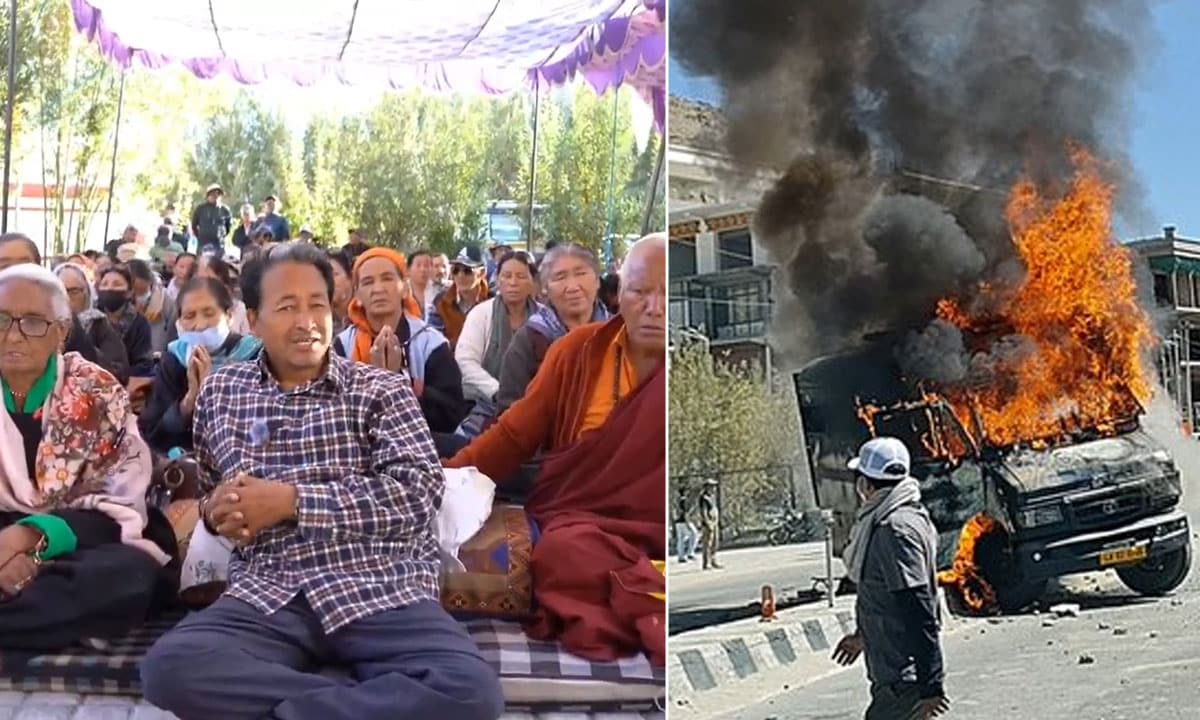What Sparked the ‘Gen Z’ Protests and Violence in Leh, Ladakh? Explained
At least four people were killed and over 70 injured during the unrest, prompting a curfew and strict assembly restrictions in the largest town of the Union Territory.

Leh, Ladakh: A day of violence marred what had been two weeks of peaceful protests in Leh, Ladakh, as demands for statehood and greater local autonomy escalated into clashes between protesters and security forces on September 24. At least four people were killed and over 70 injured during the unrest, prompting a curfew and strict assembly restrictions in the largest town of the Union Territory.
The protests, led by climate activist Sonam Wangchuk, who had been on a hunger strike since September 10, initially focused on securing statehood for Ladakh, constitutional safeguards under the Sixth Schedule, and addressing long-standing issues such as unemployment, land rights, and protection of the fragile local ecosystem. Wangchuk called off his strike on Wednesday, describing the violence as “an outburst of the young generation” who had grown frustrated with delays in addressing their demands.
Also Read: LPG Cylinder Blast: Are You Aware of the Hidden ₹50 Lakh Insurance on Your Gas Connection?
The Union government, however, accused Wangchuk of “misleading the public through provocative references to Arab Spring-style protests and Gen Z movements in Nepal,” claiming his speeches incited the mob that attacked government offices, the BJP headquarters, and security personnel. More than 30 police and paramilitary personnel were reported injured during the clashes, while police firing in self-defense resulted in casualties among the protestors.
Wangchuk defended himself in interviews, stating that the unrest was fueled by the BJP’s perceived ‘U-turns’ on earlier promises and years of joblessness among local youth. He described the day as “one of the saddest in my life” and emphasized that the violence arose organically, triggered by the deteriorating health of hunger strikers, rather than any orchestrated political agenda.
The roots of the unrest trace back to 2019, when Ladakh was carved out as a separate Union Territory following the abrogation of Article 370. Unlike Jammu and Kashmir, Ladakh has no elected assembly, leaving it under the direct administration of a Union-appointed Lieutenant Governor. While residents initially welcomed UT status, frustration has grown over a perceived political vacuum and centralised decision-making, prompting repeated calls for statehood and enhanced local governance.
Political leaders from neighboring Jammu and Kashmir, including Chief Minister Omar Abdullah, expressed understanding for Ladakh’s anger, highlighting the region’s longstanding desire for self-representation and the perceived gap between promises and delivery. Meanwhile, Leh’s Lieutenant Governor Kavinder Gupta termed the clashes a conspiracy, blaming the instigators for the deaths and arson.
The CBI has reportedly launched a preliminary enquiry into alleged violations of the Foreign Contribution (Regulation) Act, 2010 (FCRA) involving Wangchuk and an institution he founded. Meanwhile, the government has scheduled further talks on October 6, with additional meetings on September 25 and 26, to continue discussions over Ladakh’s statehood demands and other grievances.
As of Thursday, the situation in Leh has largely stabilized, with the curfew still in place and security forces maintaining a strong presence. Residents are cautiously returning to their routines, while political and administrative authorities work to prevent further escalation and address the long-standing issues underlying the protests.
